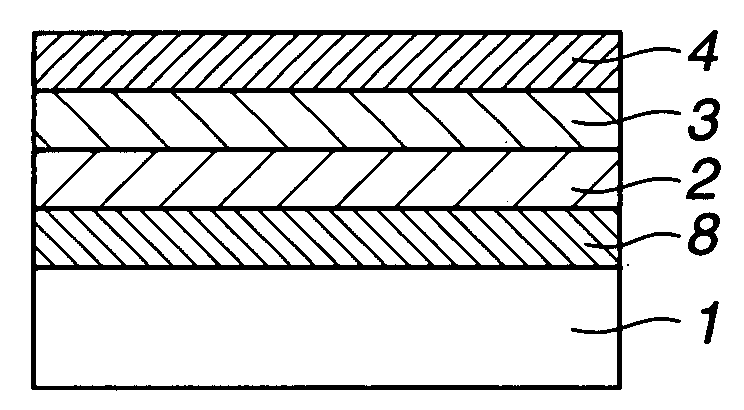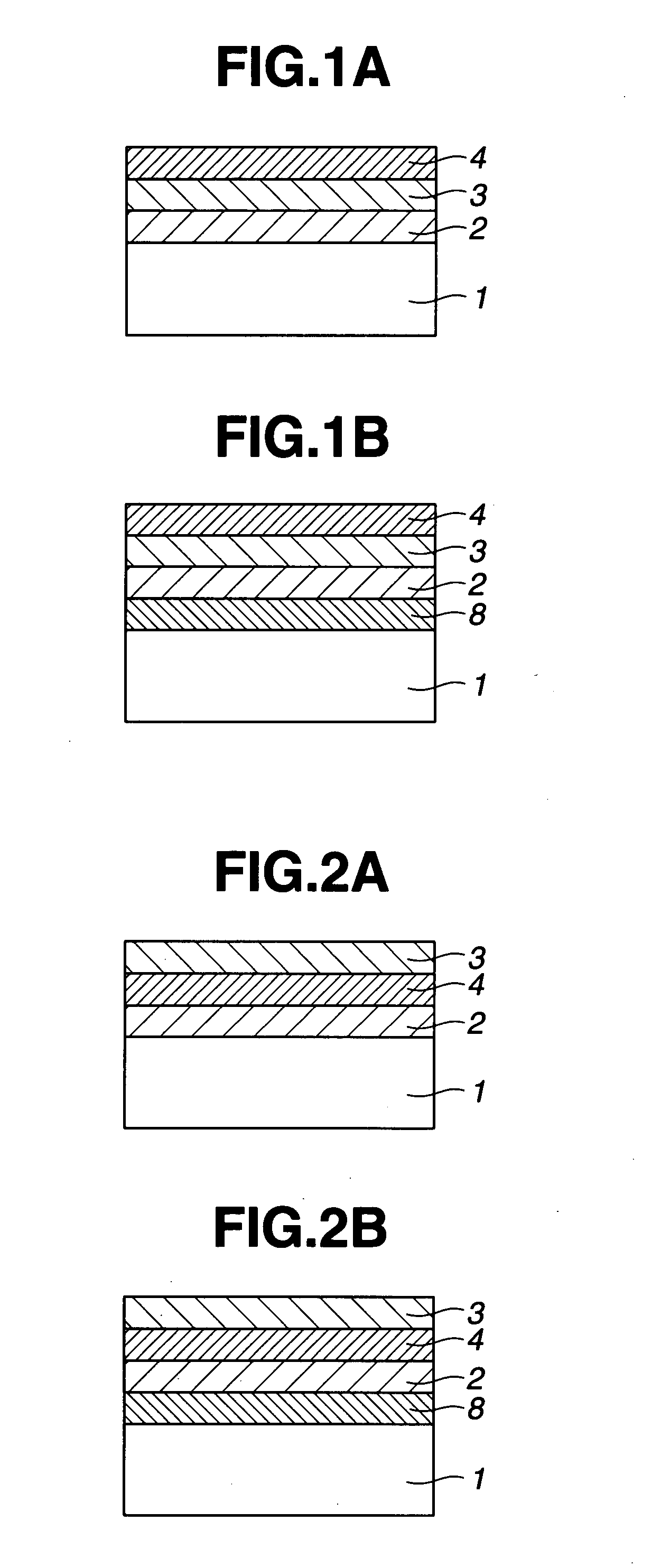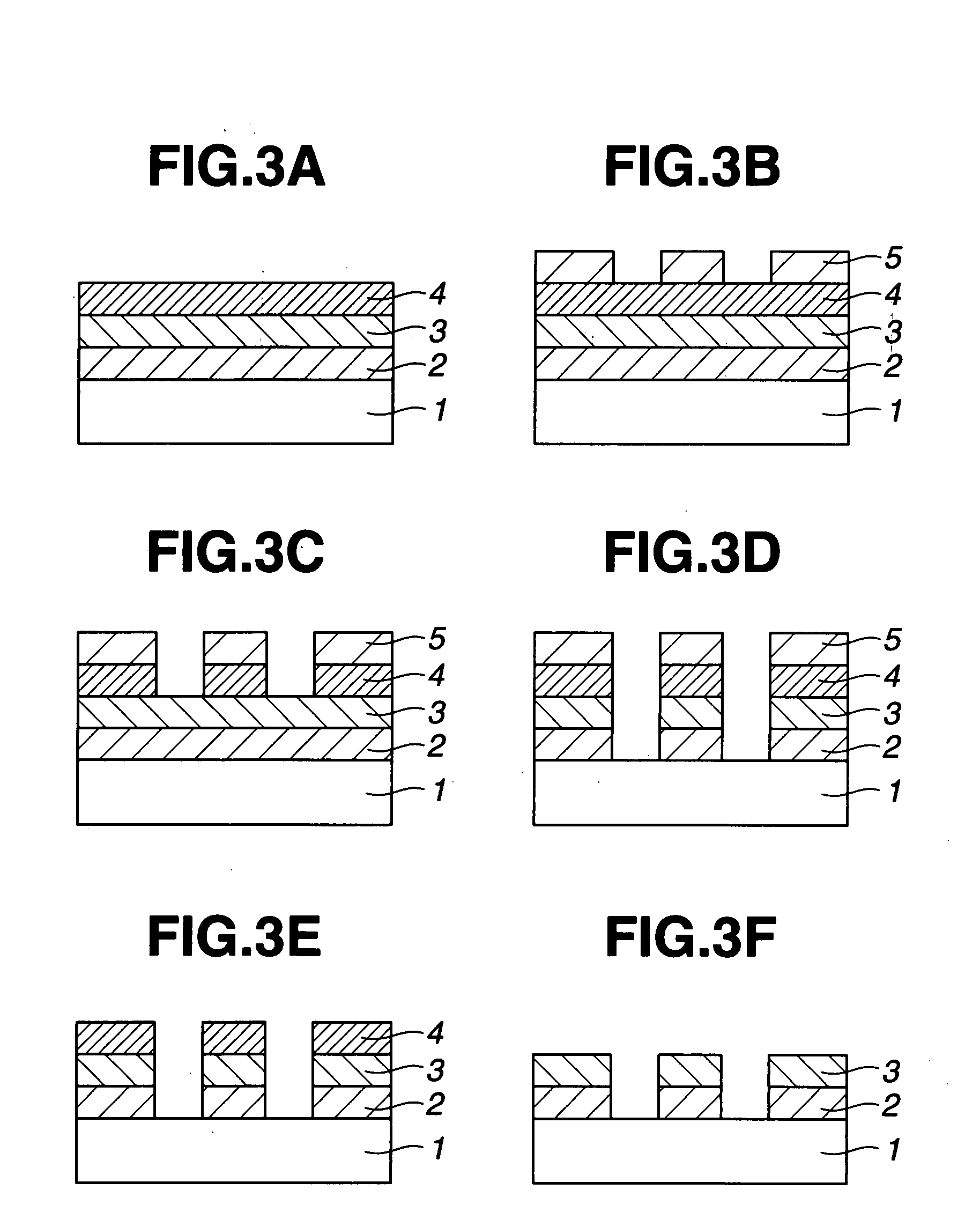Photomask blank and photomask making method
a technology of photomask and photomask, which is applied in the field of photomask blank and photomask making method, can solve the problems of preventing effective pattern transfer, reducing resist pattern profile, and increasing the demand for miniaturization of circuit pattern, and achieves low cost, high accuracy, and small pattern feature size.
- Summary
- Abstract
- Description
- Claims
- Application Information
AI Technical Summary
Benefits of technology
Problems solved by technology
Method used
Image
Examples
example
[0167]Experiments and Examples are given below for further illustrating the invention although the invention is not limited thereto.
experiment 1
[0168]As a typical photomask blank model for an ArF lithography mask, there was furnished a photomask blank comprising a CrN light-shielding film of 26 nm thick (Cr:N=9:1 in atomic ratio) and a CrON antireflective film of 20 nm thick (Cr:O:N=4:5:1 in atomic ratio) deposited in sequence on a transparent substrate. On this photomask blank, a 1:9 line-and-space pattern (isolated pattern model) and a 9:1 line-and-space pattern (isolated space model) were formed as an isolated / grouped line pattern model having a line width varying from 1.6 μm to 0.2 μm at intervals of 0.1 μm, by chlorine and oxygen dry etching under etching conditions: a Cl2 flow rate of 20 sccm, an O2 flow rate of 9 sccm, a He flow rate of 80 sccm, and a chamber internal pressure of 2 Pa.
[0169]As a result, in the isolated space, the size error over the range from 1.6 μm to 0.2 μm amounted to 5.3 nm in terms of the difference between minimum and maximum widths. In the isolated pattern, the width was 3.8 nm in the range f...
experiment 2
Etching Resistance Versus Chromium Content of Chromium-Based Material
[0173]To examine the etching resistance of chromium-based materials, sputtering was carried out by using metallic chromium as the target and argon, nitrogen and oxygen gases as the sputtering gas, and controlling the flow rates of nitrogen and oxygen gases. In this way, chromium-based material films having a varying ratio of chromium / oxygen / nitrogen were deposited on substrates. These chromium-based material films were dry etched with chlorine gas, determining the etching rate versus the chromium content in the film. The results are plotted in the graph of FIG. 11. It is demonstrated that the chromium-based material film exhibits good etching resistance as long as it has a chromium content equal to or more than 50 atom %.
PUM
| Property | Measurement | Unit |
|---|---|---|
| thickness | aaaaa | aaaaa |
| thickness | aaaaa | aaaaa |
| size | aaaaa | aaaaa |
Abstract
Description
Claims
Application Information
 Login to View More
Login to View More - R&D
- Intellectual Property
- Life Sciences
- Materials
- Tech Scout
- Unparalleled Data Quality
- Higher Quality Content
- 60% Fewer Hallucinations
Browse by: Latest US Patents, China's latest patents, Technical Efficacy Thesaurus, Application Domain, Technology Topic, Popular Technical Reports.
© 2025 PatSnap. All rights reserved.Legal|Privacy policy|Modern Slavery Act Transparency Statement|Sitemap|About US| Contact US: help@patsnap.com



